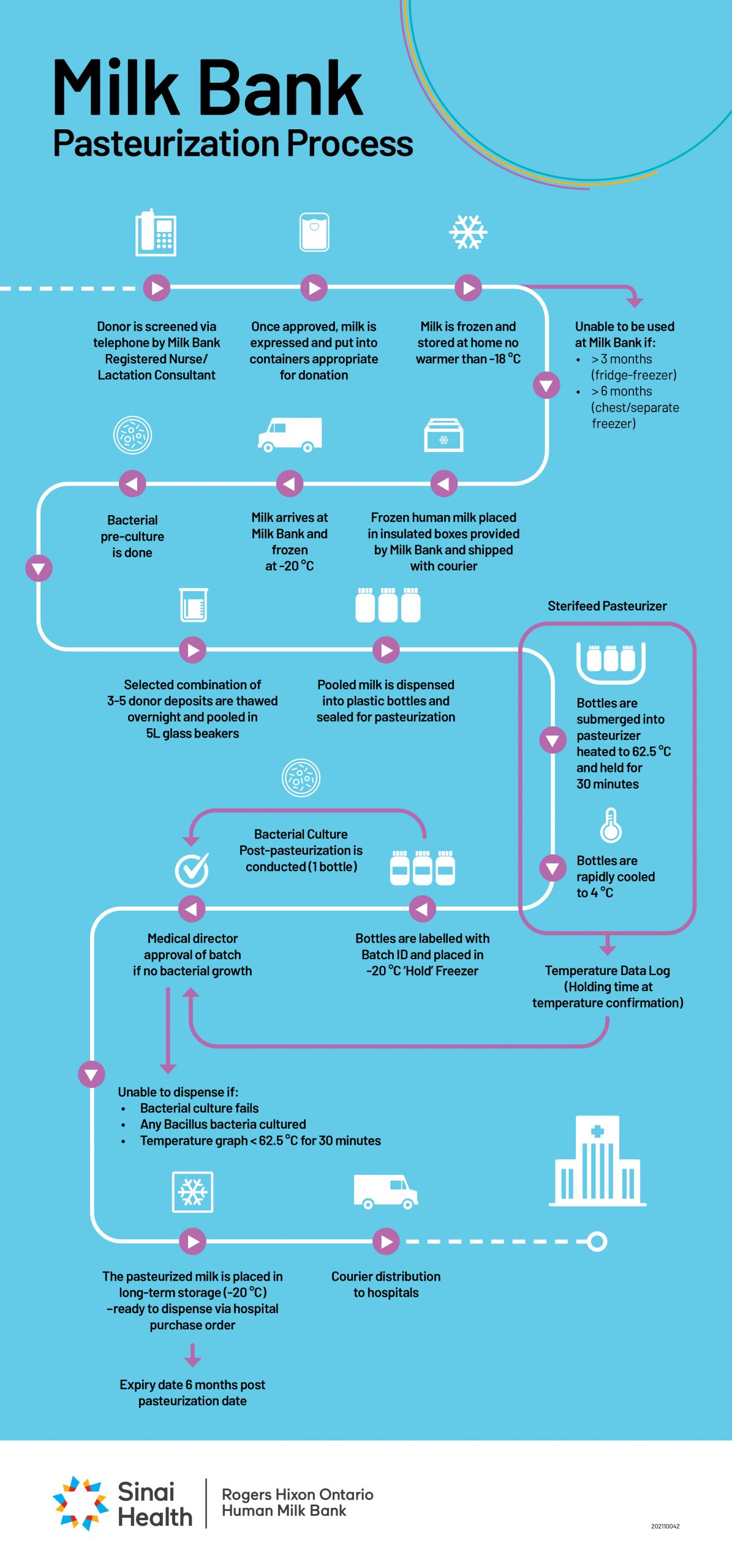Processing of donor milk

Click the image to enlarge
Download the Milkbank Pasteurization Process PDF
Text-only version of this infographic
The Rogers Hixon Ontario Human Milk Bank, Mount Sinai Hospital, Joseph & Wolf Lebovic Health Complex
Milkbank Pasteurization Process
- Donor is screened via telephone by Milk Bank Registered Nurse/Lactation Consultant
- Once approved, milk is expressed and put into containers appropriate for donation
- Milk is frozen and stored at home no warmer than -18°C
-
Unable to be used at Milk Bank if:
> 3 months (fridge-freezer)
> 6 months (chest/separate freezer)
-
-
Frozen human milk placed in insulated boxes provided by Milk Bank and shipped with courier
-
Milk arrives at Milk Bank and frozen at -20°C
-
Bacterial pre-culture is done
-
Selected combination of 3-5 donor deposits are thawed overnight and pooled in 5L glass beakers
-
Pooled milk is dispensed into plastic bottles and sealed for pasteurization
-
Sterifeed Pasteurizer
-
Bottles are submerged into pasteurizer heated to 62.5°C and held for 30 minutes
-
Bottles are rapidly cooled to 4°C
-
-
Bottles are labelled with Batch ID and placed in -20°C ‘Hold’ Freezer
-
Medical director approval of batch if no bacterial growth
-
Temperature Data Log (Holding time at temperature confirmation)
-
Unable to dispense if:
- Bacterial culture fails
- Any Bacillus bacteria cultured
- Temperature graph < 62.5°C for 30 minutes.
-
-
The pasteurized milk is placed in long-term storage (-20°C) – ready to dispense via hospital purchase order
-
Expiry date 6 months post pasteurization date
-
-
Courier distribution to Hospitals
